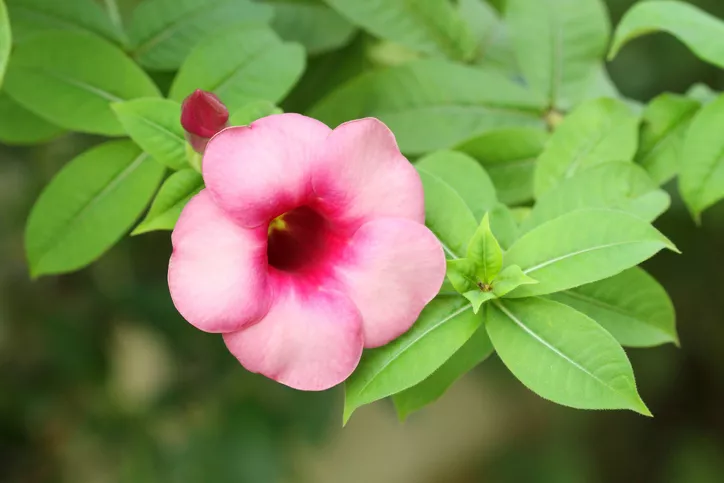The Mandevilla or Dipladenia is actually a very floriferous plant. If the flowering is not as lush as you expected, or if it does not appear at all, then this can have various causes.
 If the beautiful bloom of the Dipladenia fails, it is very annoying
If the beautiful bloom of the Dipladenia fails, it is very annoying
A lack of light is just as much a reason for a reluctance to flower as is incorrect watering. Although the Dipladenia does not need a lot of water, it likes to have it regularly. You should also fertilize the Mandevilla at regular intervals about every two weeks. You can use organic fertilizers for this, such as mature compost or horn shavings (32.93€), but also commercially available flower or liquid fertilizer.
Wrong winter quarters can also mean that the perennial Dipladenia does not like to bloom. So it should neither be too dark, for example in a dark basement room, nor too warm. The living room is therefore rarely suitable for wintering, because the ideal temperatures for this are between 8 °C and 15 °C.
How can I get my Dipladenia to bloom?
First, check the location of your dipladenia. Does she get enough light there? If not, move the plant to a lighter spot. If you have not fertilized your Dipladenia for more than 14 days, then do so immediately.
Maybe you were a little sparing with the water or fertilizer. Then be a little more generous in the future. However, you should definitely avoid waterlogging, as your Mandevilla cannot tolerate it at all. If the winter quarters were not ideal, then you probably cannot save this season. Choose the winter quarters for your non-hardy Dipladenia next autumn more carefully.
The essentials in brief:
- possibly overwintered too warm or too dark - leads to reluctance to flower in the following season
- too little fertilized
- too little light
- not watered enough
tips
As a first aid, place your sluggish Dipladenia in a bright place and give it some standard flower fertilizer (€1.95) and enough water.